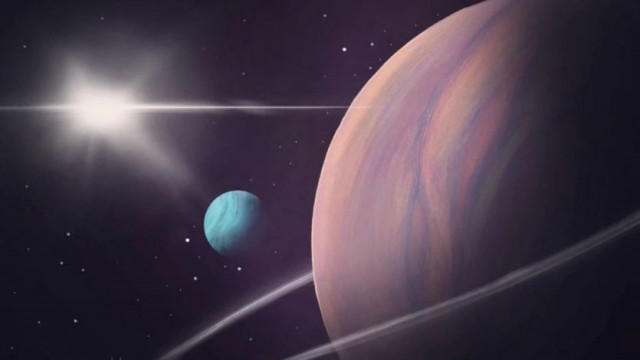European spacecraft begins pioneering mission to 3 of Jupiter's moons
Scientists believe Europa, Callisto, and Ganymede could have buried oceans that potentially harbor life

Europe's Ariane rocket on Friday launched a spacecraft on a mission to explore Jupiter and three of its icy moons – Europa, Callisto, and Ganymede – which scientists believe have buried oceans that could potentially harbor life.
The Juice spacecraft will take eight years to reach Jupiter and will conduct 35 flybys while circling the planet to learn more about the moons and their potential for supporting life. The spacecraft is equipped with nine scientific instruments provided by Europe and one by US space agency NASA.
“This is one of the most exciting missions we have ever flown in the solar system, by far the most complex” said Josef Aschbacher, head of the European Space Agency.
The most impressive aspect of the mission is that Juice will attempt to go into orbit around Ganymede, which has never been done before.
The solar system’s largest moon and the only one with its own magnetic field, Ganymede is believed to have an underground ocean, holding more water than Earth. Europa and Callisto are potentially habitable, making the moons prime candidates to search for signs of life beyond Earth.
According to Caroline Harper, the agency’s head of space science: "Juice is not in itself designed to look for life on an icy moon, but if we’re going to find life elsewhere in the solar system, chances are it’s going to be underneath the ice, if there is an ocean, underneath the ice on one of those moons."
The spacecraft will not reach Jupiter until 2031, helped by gravity-assist flybys of the Earth and its moon, as well as Venus.
Juice will take a roundabout route to Jupiter, covering 4 billion miles (6.4 billion kilometers). After swooping in close to Callisto and Europa, it will slow down to orbit Ganymede, the primary target of the €1.6 billion mission.
Also read: SpaceX gets US regulatory green light for debut Starship flight to space
Science popularizer Bill Nye, the Planetary Society’s chief executive, said, "These things take time – and they change our world."
Juice’s sensitive electronics are encased in lead to protect against radiation, and the spacecraft is wrapped with thermal blankets to withstand temperatures as low as minus 380F (193C).
Next year, NASA plans to send in more heavily shielded spacecraft to Jupiter, the long-awaited Europa Clipper, which will beat Juice to Jupiter by more than a year. If Juice confirms underground oceans conducive to past or present life, the next step will be to send drills to penetrate the icy crusts and perhaps even a submarine.



















COMMENTS
Comments are moderated and generally will be posted if they are on-topic and not abusive.
For more information, please see our Comments FAQ